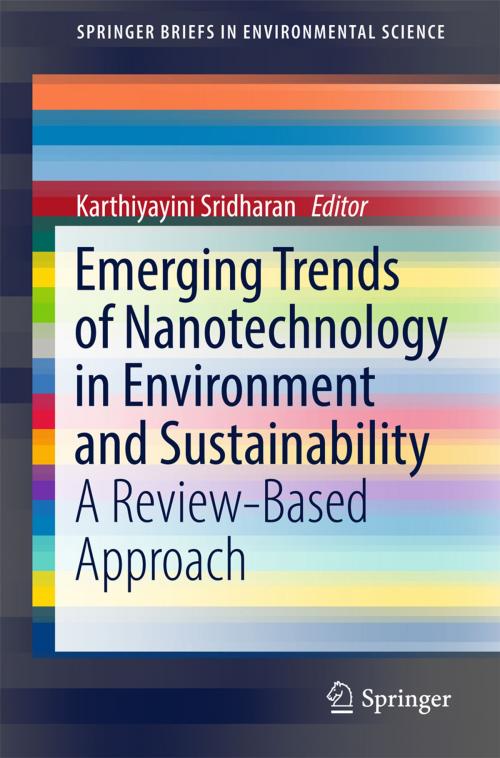Emerging Trends of Nanotechnology in Environment and Sustainability
A Review-Based Approach
Nonfiction, Science & Nature, Science, Other Sciences, Nanostructures, Biological Sciences, Environmental Science, Technology| Author: | ISBN: | 9783319713274 | |
| Publisher: | Springer International Publishing | Publication: | January 4, 2018 |
| Imprint: | Springer | Language: | English |
| Author: | |
| ISBN: | 9783319713274 |
| Publisher: | Springer International Publishing |
| Publication: | January 4, 2018 |
| Imprint: | Springer |
| Language: | English |
This book discusses nanotechnology, its benefits and risks affecting the environment we live in today, and is divided into three parts: Part-I dealing with Sustainability, Part-II describing Toxicological Impacts, and Part-III discussing Nanomaterial-based Adsorbents.
The crucial challenge of sustainability in various environmental elements is a global problem. This draws upon various issues of nanotechnology which impact sustainability of food, clean environment, green house gases, raw materials extraction, manufacturing and automobile industry. Growth in the production of nanomaterials to suit any of these applications is commendable. However, this does not negate the growth in their toxic effects. The nanotoxicity research in areas like medicine and agriculture industry is reviewed in detail in this book.
Part-II discusses the toxic nature of widely used nanomaterials. Nanomaterials are enormously used in environmental remediation due to some of their distinct properties. These properties are described and discussed.
Part-III of the book highlights the highly reactive and adsorbent properties of nanomaterials that enable them to be a competent agent in water and pollutant remediation. This book is mainly intended for researchers and students to acquire fairly comprehensive understanding and appreciation of nanotechnology dominance in sustainability challenges, with the aim to give the anticipatory governance of nanomaterials in our society and environment.
This book discusses nanotechnology, its benefits and risks affecting the environment we live in today, and is divided into three parts: Part-I dealing with Sustainability, Part-II describing Toxicological Impacts, and Part-III discussing Nanomaterial-based Adsorbents.
The crucial challenge of sustainability in various environmental elements is a global problem. This draws upon various issues of nanotechnology which impact sustainability of food, clean environment, green house gases, raw materials extraction, manufacturing and automobile industry. Growth in the production of nanomaterials to suit any of these applications is commendable. However, this does not negate the growth in their toxic effects. The nanotoxicity research in areas like medicine and agriculture industry is reviewed in detail in this book.
Part-II discusses the toxic nature of widely used nanomaterials. Nanomaterials are enormously used in environmental remediation due to some of their distinct properties. These properties are described and discussed.
Part-III of the book highlights the highly reactive and adsorbent properties of nanomaterials that enable them to be a competent agent in water and pollutant remediation. This book is mainly intended for researchers and students to acquire fairly comprehensive understanding and appreciation of nanotechnology dominance in sustainability challenges, with the aim to give the anticipatory governance of nanomaterials in our society and environment.















